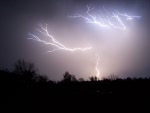security systems monitor
This being said he implied
that while this would make is job more difficult it would not prevent you from ultimately being hacked. He also mentioned zero day exploits, flaws in programs or systems that have yet to be discovered and are therefore vulnerable to exploitation. He said that to date only a few of these types of flaws have been discovered but it is a sure bet more will be found in the future. This includes flaws in home networking systems and home security. In addition to these types of governmental agencies of which the TAO is only one among many, the ability of our population to know enough about computers to hack for fun or for serious exploitation is growing as our young people are gaining increasingly technically complex instruction about computers, programming, and infrastructure. With government surveillance, surveillance by citizens for fun or to gather information and monitory peoples’ activities, store and street video cameras, and private cameras set up outside and inside residences, not to mention surveillance from other countries gathering intelligence of this countries systems, it is hard to imaging anywhere or anytime we might not be under surveillance. Where we have come to and the potential for even further exploitation of our privacy and personal information that gets accidently scooped up with actual targeted data like dolphins
when they are fishing for tuna would like have given even George Orwell nightmares. Most of what we know about developing governmental surveillance programs and America’s growing hacking efforts comes from top secret NSA documents provided by Edward Snowden, infamous whistleblower who handed documents to journalists and is still on the run. Although there are laws against persecuting whistleblowers who reports something in good faith, and their names are supposed to remain anonymous, this almost never happens. Subsequent to Snowden, another whistleblower, John Crane, came forward supporting the information delivered by Snowden. The irony was that Crane, formerly an assistant inspector general at the Pentagon, was in charge of protecting whistleblowers but when the system failed felt obligated to become one himself.
 additional door/window sensors, pet friendly motion detectors, flood detector, connected smoke alarm, Nest thermostats, wireless cameras, etc. , the equipment belongs to the customer and does not have to be returnedwhen the service is terminated. In order to separate themselves from the pack, the SimpliSafe website highlights some major differences between them and some of the larger home security companies. One of the main differences is that SimpliSafe claims no hidden fees and requires no commitment or service contract. As highlighted in the New York Times articles on SimpliSafe, many home security systems require up to a three year contract that can costthousandsof dollars, and often have add on fees that raise the actual cost of the service from what is stated as the monthly home security monitoring fee. SimpliSafe requires no such contract and no auto renewal fees. Another important difference between SimpliSafe and some of the more traditional home security systems is that SimpliSafe is 100% wireless. Not only does that mean a less expensive and difficult installation process, but more importantly the system cannot be shut down by a clever thief with wire cutters. In fact, the home security installation is so simple that the customer can begin installing the system in as littleas 5 minutes, as shown in a helpful video on the website. This is a nice incentive for those folks who don't want a hefty installation charge or permanent wiring added in their home. Of course, it could also be a negative for people who don't trust themselves to install the system on their own.
additional door/window sensors, pet friendly motion detectors, flood detector, connected smoke alarm, Nest thermostats, wireless cameras, etc. , the equipment belongs to the customer and does not have to be returnedwhen the service is terminated. In order to separate themselves from the pack, the SimpliSafe website highlights some major differences between them and some of the larger home security companies. One of the main differences is that SimpliSafe claims no hidden fees and requires no commitment or service contract. As highlighted in the New York Times articles on SimpliSafe, many home security systems require up to a three year contract that can costthousandsof dollars, and often have add on fees that raise the actual cost of the service from what is stated as the monthly home security monitoring fee. SimpliSafe requires no such contract and no auto renewal fees. Another important difference between SimpliSafe and some of the more traditional home security systems is that SimpliSafe is 100% wireless. Not only does that mean a less expensive and difficult installation process, but more importantly the system cannot be shut down by a clever thief with wire cutters. In fact, the home security installation is so simple that the customer can begin installing the system in as littleas 5 minutes, as shown in a helpful video on the website. This is a nice incentive for those folks who don't want a hefty installation charge or permanent wiring added in their home. Of course, it could also be a negative for people who don't trust themselves to install the system on their own.
